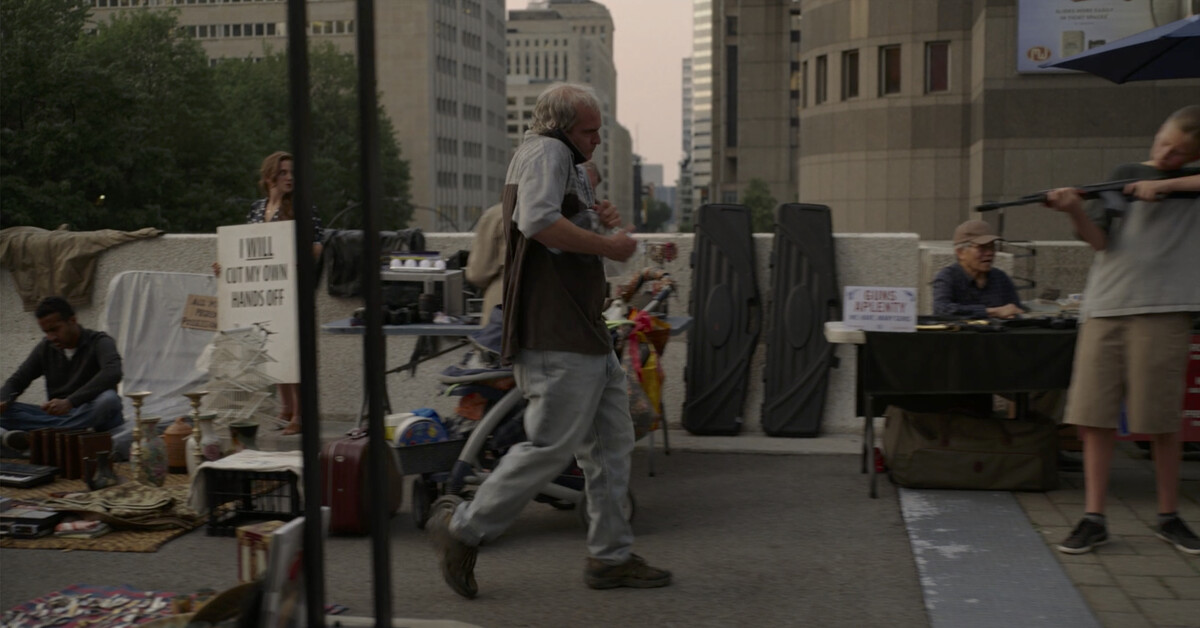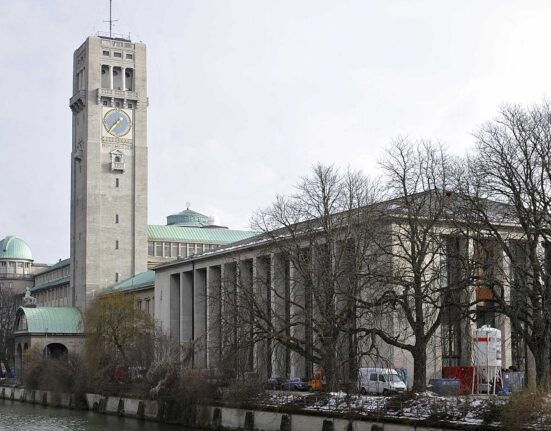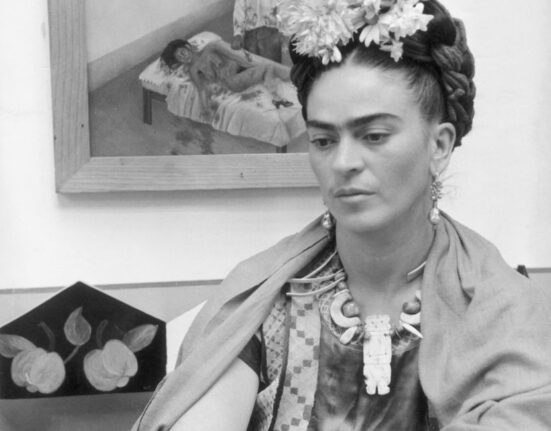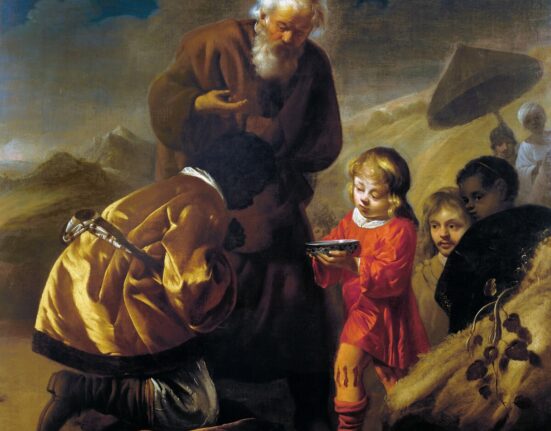However much a period may try to disguise itself, its real nature will still show through in its architecture, whether this uses original forms of expression or attempts to copy bygone epochs. We recognize the character of the age as easily as we identify a friend’s handwriting beneath attempted disguises.
—Sigfried Giedion
Sigfried Giedion wrote a history of things that go unnoticed, which he calls “anonymous history.” Anonymous history is a history of machine production replacing handicraft, a history that includes the energies of the unnamed engineers and builders who shaped the generic aspects of the environments we live in. This is a difficult history to write and describe because it is made of things and structures—walls, alleys, streets, windows, railings, clocks, etc.—that are unremarkable and lacking in style. However, for Giedion, certain material characteristics of the built environment and the technologies that formed it will always “show through.” Material and design elements of the built environment that are durable rather than ephemeral, distinctive in their shape and tied to the unique character of places are what he calls “constituent facts” and exert a semiotic force. They are “those tendencies which, when they are suppressed, inevitably reappear.”
In his earlier work, Giedion prefers the term “building” over “architecture.” Building contains the process and materiality of construction, while “architecture is only part of this process, even if a special one.” This makes it difficult to grasp where architecture is located, as he would write: “What belongs to architecture? Where does it begin, where does it end?” Everything belongs to “this fluid transition of things,” to this “collective design”:
Fields overlap: walls no longer rigidly define streets. The street has been transformed into a stream of movement. Rail lines and trains, together with the railroad station, form a single whole. Suspended elevators in glazed shafts belong to it just as much as the insulating filling between the supports. The antenna has coalesced with the structure, just as the limbs of a towering steel frame enter into a relationship with city and harbor. Tall buildings are bisected by rail lines. The fluctuating element becomes a part of building.
The “interpenetration” of spaces in the city creates a “fluid” movement between spaces, lines of movement between things. Though Giedion was not writing about cinema, he was thinking and writing cinematographically, using radical juxtapositions to break disciplinary boundaries and those between the virtual and the physical, image and reality. With this approach to seeing the built environment, he comes to the realization: “It seems doubtful whether the limited concept of ‘architecture’ will indeed endure.”
Giedion had a strong influence on Walter Benjamin (Arcades Project) and Siegfried Kracauer (early writings on the ornament and Theory of Film) and after them, Marshall McLuhan (Guttenberg Galaxy, Understanding Media). For these thinkers, cinema is a mediation, an environment, and an archive of the city’s constituent facts, contingencies, and ways of perceiving. Giedion’s thinking was inspired by the practices of the Surrealists and the Bauhaus designers (Moholy-Nagy) for whom objects contain networks of relations, a cultural ecology of the energies that enabled their appearance. Things contain multitudes of networks, from the extraction of natural resources to the labor needed to produce them to the systems needed to distribute them.
Developed from the 1920s onward but fully formed in Mechanization Takes Command (1948), Giedion wrote the history of “modest things of daily life … [that accumulate] into forces” and act upon us in subtle ways. Generic things have specific histories filled with “manifold relations.” In this sense, the mundane, generic, processed, yet nevertheless distinct material environments throughout Canadian cities (and beyond) that are used as locations and backgrounds in movies form a dynamic archive of places. Many of the generic places (spaces) used in films as background are mundane, or what anthropologist Pascale Auger describes as “any-space-whatever”: fluid points of transit between places such as work and home, like metro stations and airport terminals. Gilles Deleuze reinterprets Auger’s concept and finds in it the opposite of homogeneity: “Any-space-whatever is not an abstract universal, in all times, in all places. It is a perfectly singular space, which has merely lost its homogeneity, that is, the principle of its metric relations or the connection of its own parts, so that the linkages can be made in an infinite number of ways. It is a space of virtual conjunction, grasped as pure locus of the possible.” Such spaces have the character of Giedion’s anonymous designs: they are disconnected from the larger urban context that would make them identifiable, as such they are less unique, more malleable, and better able to mimic other cities. But even as they play other cities, they nevertheless maintain a “singular” materiality that makes the city visible in the new forms of Global Cinema.
Locations
Montreal differs from other cinematic cities in Canada (such as Vancouver and Toronto) since its colonization by the French and British has left distinct architectural remnants of its colonial past. As is often noted, Montreal is both unique and versatile in appearance combining European and modern architecture. Like many other provinces in Canada, Quebec’s location industry is supported through a provincial film office, the Quebec Film and Television Council, which is associated with the tourist industry through Tourisme Québec. In Quebec, the location industry is connected to a thriving francophone film and television industry with a strong local labor pool and design talent. The industry also has its own star system and a highly developed fan base along with a provincial government interested in supporting international productions through tax credits, which extend to VFX and animation studios.
Location managers and the subsidiary position, location scouts (which are sometimes the same person), find locations for films, and work closely with producers, directors, cinematographers, screenwriters, and art directors to match locations described in scripts. Though they are what the industry calls “below the line” labor and their creative participation is often under recognized, their work contributes significantly to a film’s visual and acoustic “feel,” atmosphere, and lasting impression. In fact, location managers are often the first people hired on a production after the producer and director. A recent article in The Hollywood Reporter makes the case for location managers to be recognized by the Academy of Motion Picture Arts and Sciences, arguing that a “film’s locations are among the most essential creative building blocks of film, and the scouts who find them are artists deserving of recognition.”
Adrian Knight has been working in the Montreal location industry since the mid-1990s, and recently worked on American director’s Ari Aster’s surrealist arthouse psychodrama Beau is Afraid (2023). Though the film takes place in Beau’s fantasy world, with more than half the film being animation, the rest of the scenes were shot on location in downtown Montreal and in the suburbs of Saint-Bruno-de-Montarville and Senneville. There are scenes that stand out as “distinctly” urban Montreal—meaning recognizably the urban core. The opening scene features an attempted suicide off the Place du Canada skyscraper as witnessed from the Plaza. This is presented through intricately choreographed movements of people below the building, conveyed through a deceptively simple fifty-second tracking shot. What Aster calls “an evil clown mirror,” the scene presents an informal market with tables, vendors, and artisans displaying their wares—clay pots, motorized toy boats, confectionaries, watches, figurines, and more. Tucked into the sequence is a machine gun demo and zealous activism (“I will cut my own hands off”). The plaza is activated by numerous forms of human ambulation—baby carriages, scooters, skateboards, rollerblades, bikes etc. As the sequence nears its end, Beau joins a small crowd holding up their phones to capture a figure atop the tall building. An onlooker laughs “we’re just trying to get him to jump.” The figure is seen from the ground through a cell phone screen. This is Beau’s reality, a reality that amplifies the violent underbelly of everyday life.
In the director’s commentary, Aster notes that he worked with the location crew to find the exact place in the city that could accommodate this complex shot. The concrete plaza and the skyscraper are testimony to Montreal’s ten-year architectural boom on the heels of Expo 67, evidenced in its secret love affair with brutalist architecture. Aster also speaks to an inspiration known as “chicken fat,” a term that was used to describe cartoonist Will Elders’s graphic work of the 1950s. In Elder’s dense drawings, the background is packed with a multitude of details that exceed any one viewer. This combination of brutalism’s artificial concrete textures and centrifugal action creates a sense of an overwhelming yet highly controlled city space perfectly suited to the film, and to the feeling that suicide is inevitable at the end of the scene.
Similarly, one extensive mise-en-scène around Beau’s apartment was shot at the intersection of St. Catherine Street at St. Elizabeth Street, near Sanguinet, a location chosen because of its “derelict” appearance. Art Director David Gaucher worked with the location team to find what Aster described in the script as “a dilapidated zone in a big city on the East Coast.” Like the scene in the plaza, the street scene presents densely choreographed movements enacted by dozens of extras that populate the background. Impressively captured through one tracking shot of a city block at night (that took nineteen takes), the extras act out intricate mini dramas unfolding in carnivalesque fashion. With its potholes, weathered cracks, and dilapidated storefronts, the street was well known to the location scouts who suggested this location for the film. For Aster, locations in Montreal such as these “ground the more obstruse” aspects of the film. He also concedes that location shooting is about getting “close enough to what you are looking for because you are never going to get the exact thing.” He goes on, “Those are things you kinda get saddled with, and you need to live with them. Often, they become the things you love the most because it adds so much texture.”
In his Theory of Film, Kracauer theorizes how “textures” are part of daily living, “products of habit and microscopic interaction,” they lie beyond ideology and beliefs. Much like Giedion’s “constituent facts,” they belong to anonymous history, and change slowly over time:
surviving wars, epidemics, earthquakes, and revolutions. Films tend to explore this texture of everyday life whose composition varies according to place, people and time. So, they help us not only to appreciate our given material environment but extend it in all directions. They virtually make the world our home.
Giedion’s anonymous history “exert their force” through these textures that are derived from the physical locations of a city where a film is shot. Here we can see locations as dense phenomenological imprints on the film’s setting. Indeed, the intersection of St. Catherine and St. Elizabeth carries a social ontology that arguably seeps into the film and gives it a peculiar energy. This section of St. Catherine, historically the city’s red light district, has been an area of real crisis exacerbated by the recent global pandemic with homelessness, mental health, and addiction converging to create what the Mayor of Montreal referred to as “a melting pot for vulnerable populations.” Within this scene of an “urban hellscape,” textures and gestural dramas create a mix of documentary and fiction to convey the violence of social collapse that sutures Beau’s outer and inner world.
Way Finding
Films shot in Montreal, and films that use Montreal as a stand-in for other cities are often seeded by a deep nationalist sentiment (the Quebec sovereignty movement is in part inspired by the distinctiveness of Quebec culture and language) or a strong civic pride that can be traced across the different components of the production workflow. The importance of cinematic locations in fan culture has been increasing exponentially over the past few years. Websites as well as blogs often accompany the release of large Hollywood Blockbusters and film franchises (such as Jack Ryan, X-Men, and Scream), with locations pictured in films being geotagged by fans. This hyper-localized appreciation for film sets and location disguises has been growing in popularity with GPS, Street View, and websites such as Set-Jetter identifying locations in hundreds of films. Location industries in North America also often include websites that invite people to offer their homes to serve as locations, creating an anonymous living archive of the possible cinematic city. Such design ecologies subtly shape the films they inhabit, and as Kracauer suggests, expands cinematic environments “in all directions” to “virtually make the world our home.”
Scream VI (2023) was shot in Montreal. A TikTok video by Maryse excitedly asks if anyone thought it was actually “Ghost face takes on New York City… Let me tell you I just saw it in a Montreal Theatre, and everyone was screaming ‘oh my god there’s my apartment, there’s my park.’” Having been an extra in the film, she proceeds to take the different locations of the film apart. “It is so Montreal centric: Park Lafontaine, McGill University, the Bodega (it’s a Dep!), the apartment building. It’s not New York—c’est Montréal Calise!!!” In an interview, the film’s production designer Michele Laliberté describes her work on Scream VI as a collaboration with the directors Tyler Gillett and Matt Bettinelli-Olpin. Laliberté, who is trained as an architect and set designer, recounts the process of reading the script and thinking through the different elements of the film including the locations, props, costumes and studio sets. Laliberté describes the back and forth with the directors and screenwriters, suggesting locations that would add to the feeling of the film even if the new locations required rewrites. One example was the inclusion of a theater instead of a warehouse for the final scene. Veteran location manager Michele St-Arnaud suggested Montreal’s iconic Le National Theatre (the oldest theatre in Montreal built in 1900) to host the meta ghost face museum. Though this new location required a rewrite, the directors were thrilled not only because the location was “spectacular,” but also the location and story line added another discursive dimension to the film; a commentary on the present state of movie going.
There are many examples of location managers and scouts working with directors to transform a film’s “textures” through the inclusion of specific places and architectures, bringing new meanings to a film felt at conscious and unconscious levels. Like the work of the anonymous engineers who built the urban environments most of us live in, their pivotal work in the commercial film industries has up until now gone unrecognized. This might change, however, with the ubiquity of location aware media (trackers, games, social media) which have made places interactive and accessible as images. This new intelligence and collective fascination might shed light on the role that actual locations play in narrative films not simply as neutral backgrounds, but as metadiscourse and forceful constellations grafted onto global mediascapes as resilient traces of locality.






